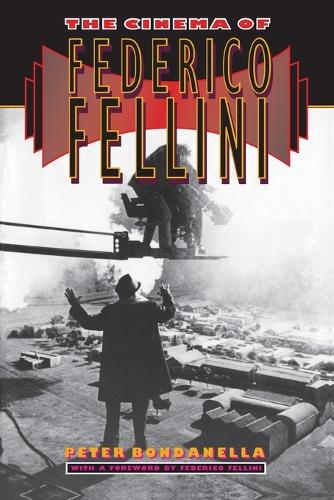
The Cinema of Federico Fellini
(Paperback)
Publishing Details
The Cinema of Federico Fellini
By (Author) Peter Bondanella
Princeton University Press
Princeton University Press
13th July 1992
United States
Classifications
General
Non Fiction
Biography: arts and entertainment
Film history, theory or criticism
791.430233092
Runner-up for Choice Magazine Outstanding Reference/Academic Book Award 1992
Physical Properties
Paperback
392
Width 152mm, Height 235mm
595g
Description
This artistic biography of the Italian film-maker Federico Fellini shows how his imagination has been shaped by popular culture, literature and his encounter with the ideas of C G Jung, especially Jungian dream interpretation. Covering Fellini's entire career, the book links his mature accomplishments to his first employment as a cartoonist, gagman and sketch-artist during the Fascist era and his development as a leading neo-realist scriptwriter. Peter Bondanella thoroughly explores key Fellinian themes to reveal the director's growth not only as an artistic master of the visual image but also as an astute interpreter of culture and politics. Throughout the book Bondanella draws on a new archive of several dozen manuscripts, obtained from Fellini and his scriptwriters. These previously unexamined documents allow a comprehensive treatment of Fellini's important part in the rise of Italian neo-realism and the even more decisive role that he played in the evolution of Italian cinema beyond neo-realism in the 1950s. After two chapters on Fellini's pre-cinematic career, the book covers all the films to 1991 in analytical chapters arranged by topic: Fellini and his growth beyond his neo-
Reviews
Winner of the 1992 Book Award of the Agnelli Foundation's Conference Group on Italian Politics and Society One of Choice's Outstanding Academic Titles for 1992 "Offers rare insight into the life and times of one of the screen's most imaginative auteurs... Like its subject's best efforts, the book is as entertaining as it is enriching."--Variety "Peter Bondanella, an esteemed scholar of Italian film, has committed an act of daring. It's the best kind of daring - unselfconscious and authentic... Courageous in ideational independence, he is equally steadfast in his enterprise - to understand and explicate and important artist's process. He does this to an impressive degree, not with clinical smugness but with relish and respect. His book is a loving and helpful tribute."--The New Republic
